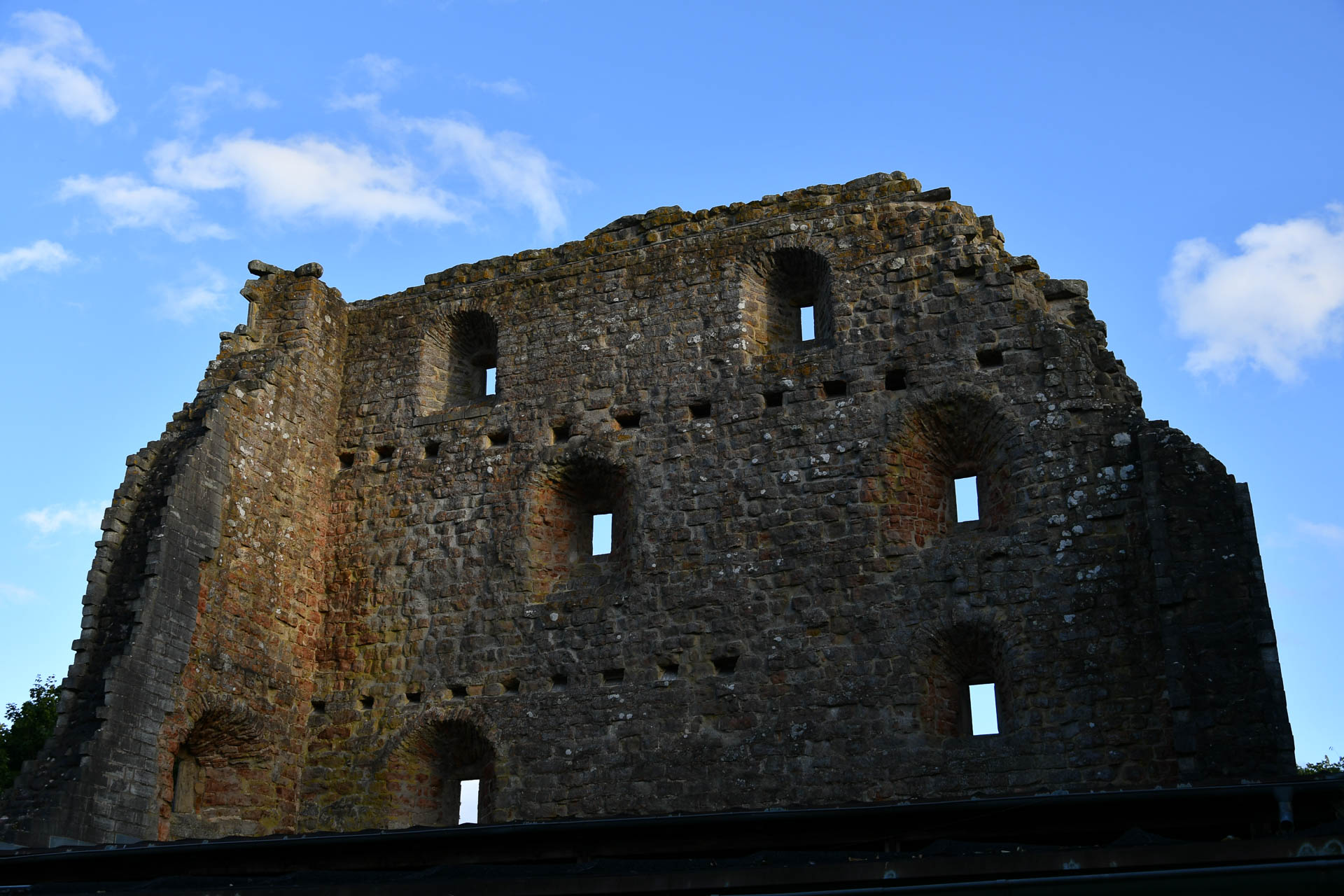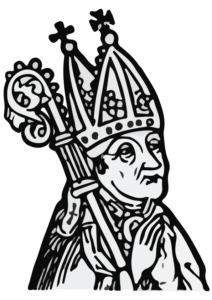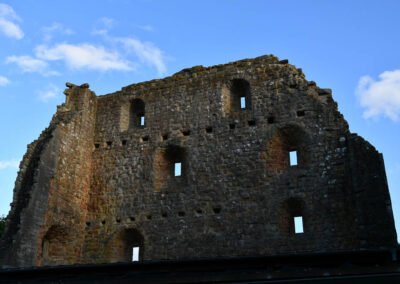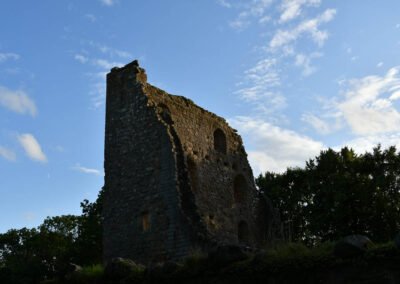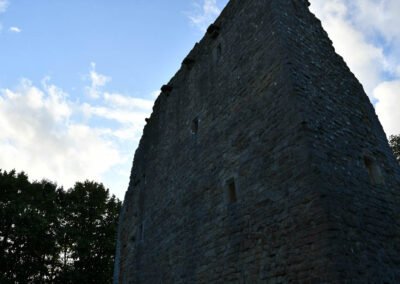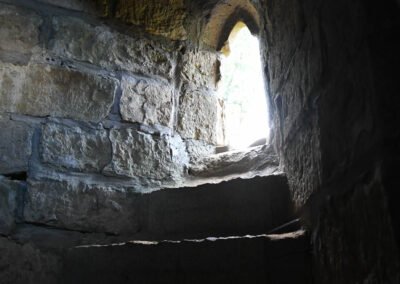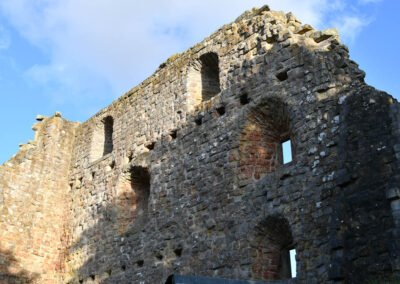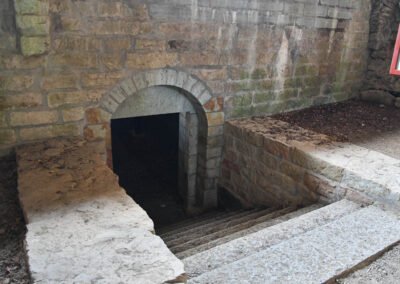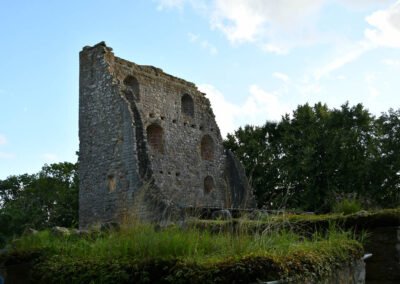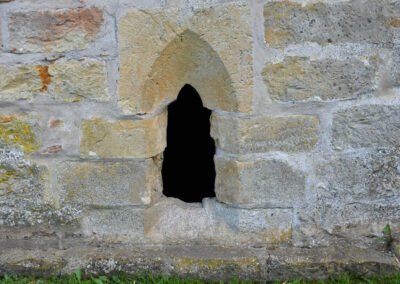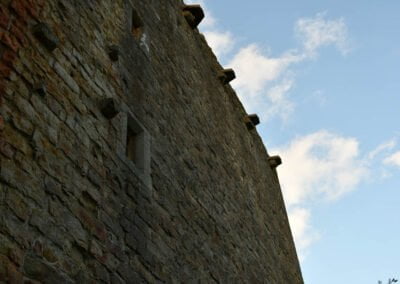The Bishop’s Castle in Husaby is a historical site that has played an important role in Sweden’s, particularly Västergötland’s, Christian history. The castle, originally the bishop’s residence, is located in Husaby near the spring where Sweden’s first Christian king, Olof Skötkonung, according to tradition, was baptized in the early 11th century. Throughout the Middle Ages, Husaby was an important bishop’s seat, even though Skara was the diocese capital with the cathedral. The site was likely built upon as early as the 13th century or earlier, but the original estate may have been closer to the church.
Bishop Brynolf
The bishop’s castle, of which we now see the remains, was built in five stages, from around 1480 onwards,but some researchers believe that the castle began to be built even before Bishop Brynolf’s time, in the early 15th century. Regardless, it was during Bishop Brynolf Gerlafesson’s time in the 13th century that the castle was significantly expanded and reinforced. Brynolf Gerlaksson was bishop in Skara between 1478 and 1505.
The castle served not only as the bishop’s residence but also as an administrative center and a symbol of the church’s power and influence in the region.
15-meter-high stone wall
The oldest part of the castle is the square stone house, whose south wall today rises over fifteen meters. It originally consisted of four floors, with three rooms and a prison on the ground floor, while the upper floors contained living quarters and a hall. The ground floor is still well-preserved.
Built in stages
The castle soon transformed from a simple stone house into a defensive stronghold. A second construction phase included an extension to the southwest, likely for defensive purposes. During the third phase, additional structures were built on the west side, including thick walls around a well to secure the water supply. A surrounding ring wall, up to one and a half meters thick and preserved up to two meters in height, was also added. Further buildings were constructed, including a half-timbered outbuilding that served both economic purposes and defense, complete with cannon embrasures and a flanking tower.
Central heating
One of the castle’s most interesting features was its central heating system, with a warm-air furnace known as a hypocaust. Heat from the furnace was channeled through ducts up the walls to warm the bishop’s grand hall, a technique also used in other medieval buildings in Sweden.
The Reformation Marked the End
After the Reformation in the 16th century, the castle lost its original function. In 1527, the church’s property in Husaby was confiscated by the crown as part of the Reformation, and the bishop’s castle was subsequently destroyed. Over time, the structure fell into disrepair and was eventually demolished.
Excavations
It was not until the early 1960s that archaeological excavations began, which uncovered the castle’s ruins. These excavations provided valuable insights into the castle’s extent and construction, as well as its role in the region’s religious and political history.
Visiting the Ruins
Saint Sigfrid’s Spring and the Bishop’s Castle are easily accessible and located just a few kilometers west of Götene. Parking is available at Husaby Church, and the Bishop’s Castle is a short walk away.
Husaby Bishop’s Castle is located on private land, and visitors are urged to be considerate of the nearby residents. Today, the Bishop’s Castle in Husaby is a fascinating ruin and an important historical site that attracts both history enthusiasts and tourists. The site offers a unique insight into Sweden’s early Christian history and medieval architecture, and it continues to be an important study object for researchers interested in the ecclesiastical and cultural development of the Nordic Middle Ages.
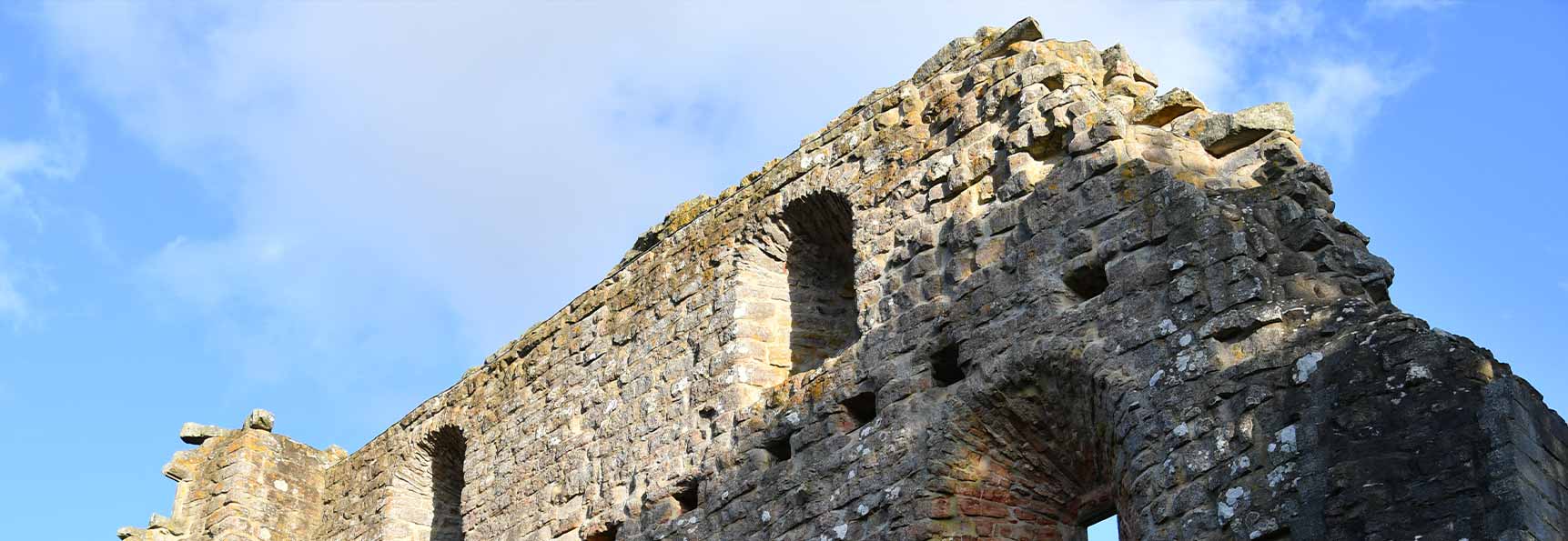
Visitor Address
Bispgården 1
533 95 Götene
Telephone number
Not available
Websitel
Husaby Bishop’s Castle (County Administrative Board)
Directions
, Find on the map (link)
Approximate travel time from Valle Camping
By car: 25 minutes
By bike: 1 hour 17 minutes
Distance: 27.2 km

